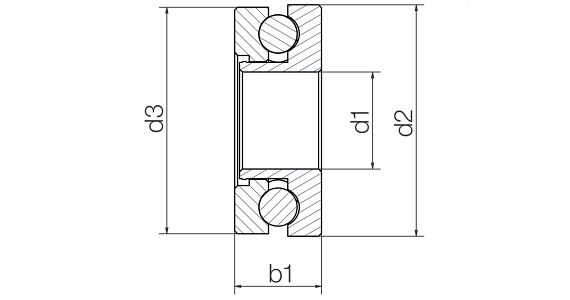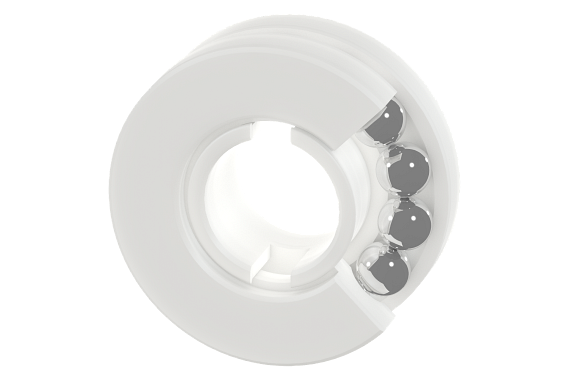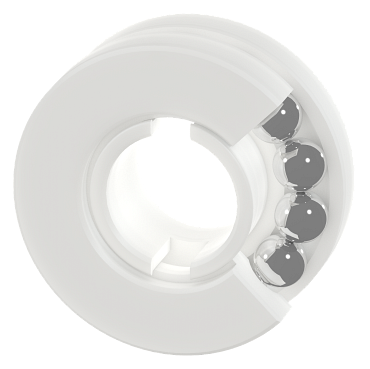xiros® thrust ball bearings
xiros® thrust bearings made of plastic are particularly light in contrast to thrust bearings made of metal. They are characterised by smooth operation, low friction and low wear values. Since they require no additional lubrication, they are clean and ideal for applications in medical and packaging technology, food contact applications and many other industries.
Unlike metal thrust bearings, xiros® thrust bearings made of polymer are very light. They are characterised by smooth running, low friction and extraordinarily low coefficient of wear. As they do not need any additional lubrication, they are clean and suitable for the medical sector, the packaging industry and applications involving contact with food.
Visit the shop
Thrust bearing FAQ's
xiros® thrust ball bearing options
Axial thrust washers
- Absorb higher loads than standard thrust washers
- Low break-away torque
- Low coefficient of friction
Visit the shop
What are thrust bearings?
Thrust bearings, also known as compression bearings, are there to absorb forces in the axial direction of the shaft. Their design makes them ideal for low to medium speeds with low centrifugal forces and high stiffness.In contrast, deep groove ball bearings in accordance with DIN 625 implement the support of radial loads, whereby small to medium axial forces can also be absorbed. If the forces act in the direction of the shaft or axis, this is referred to as axial forces.
Standard radial deep groove ball bearings are not sufficient to dissipate these forces. Ball bearings are required for this purpose, which prevent displacement in the axial direction. Thrust bearings allow load distribution to all rolling elements, in a completely different way as is the case with radial bearings.
Standard radial deep groove ball bearings are not sufficient to dissipate these forces. Ball bearings are required for this purpose, which prevent displacement in the axial direction. Thrust bearings allow load distribution to all rolling elements, in a completely different way as is the case with radial bearings.

How are thrust bearings constructed and what are their advantages?

The thrust races of our thrust bearings are made of the high-performance plastic xirodur developed by igus. This makes the use of lubricating greases superfluous, which in turn saves maintenance costs. The balls can be made of stainless steel or glass. The xiros thrust bearings are therefore made of plastic:
✔️ Corrosion-free,
✔️ Non-magnetic (when using glass balls) and
✔️ Resistant to chemicals.
The stated dimensions of thrust bearings are in accordance with the DIN 711 standard. The range includes single-row and double-row thrust bearings. The double-row thrust bearings are particularly well suited if a higher load capacity is required.
✔️ Corrosion-free,
✔️ Non-magnetic (when using glass balls) and
✔️ Resistant to chemicals.
The stated dimensions of thrust bearings are in accordance with the DIN 711 standard. The range includes single-row and double-row thrust bearings. The double-row thrust bearings are particularly well suited if a higher load capacity is required.
When are thrust bearings used?
Thrust bearings are used when high stiffness, low centrifugal forces and low to medium speeds are required. As a rule, this type of bearing is not suitable for radial loads. If necessary, they are combined with radial bearings. Radial bearings are designed in such a way that they withstand the forces acting vertically on the shaft but can also absorb radial forces at high speeds. Some rolling bearings are able to tolerate radial and axial forces that act on a shaft.Thrust bearing table
| Installation size | Inner Ø [mm] | Outer Ø [mm] | Width [mm] |
|---|---|---|---|
| 51100 | 10 | 24 | 9 |
| 51104 | 20 | 35 | 10 |
| 51104 (double row) | 20 | 47 | 10 |
